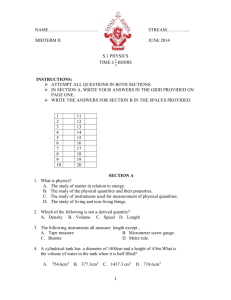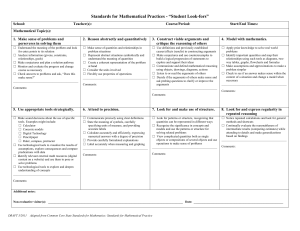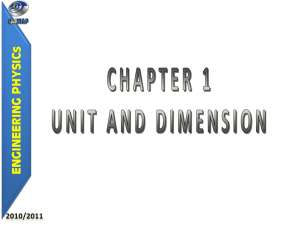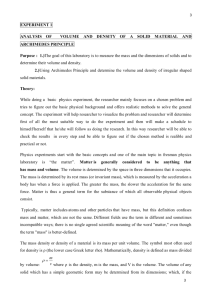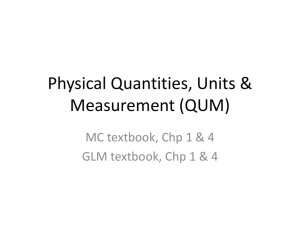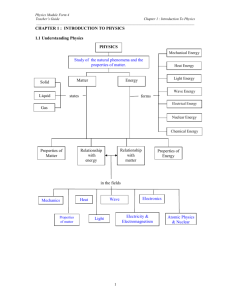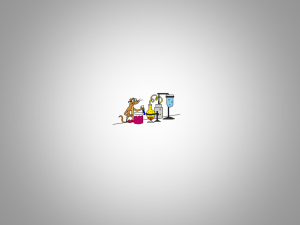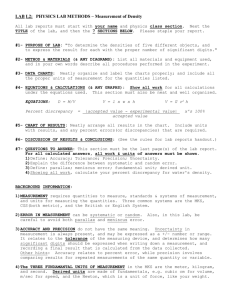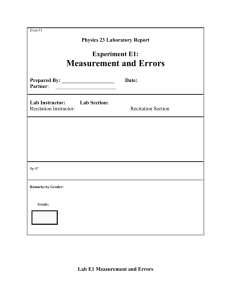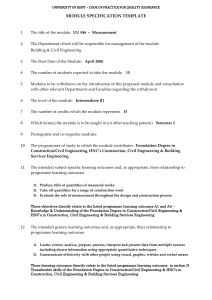Microsoft Word - cover labsheet JMSK.doc - BB101
advertisement
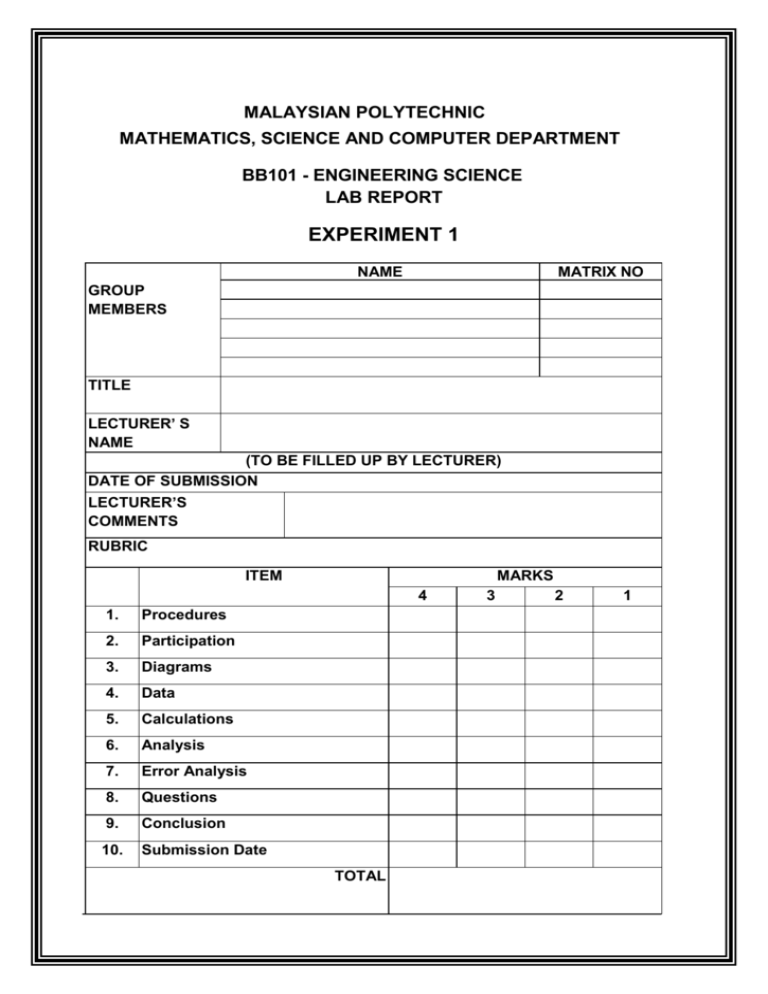
MALAYSIAN POLYTECHNIC MATHEMATICS, SCIENCE AND COMPUTER DEPARTMENT BB101 - ENGINEERING SCIENCE LAB REPORT EXPERIMENT 1 NAME MATRIX NO GROUP MEMBERS TITLE LECTURER’ S NAME (TO BE FILLED UP BY LECTURER) DATE OF SUBMISSION LECTURER’S COMMENTS RUBRIC ITEM MARKS 4 1. Procedures 2. Participation 3. Diagrams 4. Data 5. Calculations 6. Analysis 7. Error Analysis 8. Questions 9. Conclusion 10. Submission Date TOTAL 3 2 1 P age |2 PHYSICAL QUANTITIES AND MEASUREMENT OBJECTIVE To obtain derived quantities from base quantities. INFERENCES 1. Base quantities are the quantities that cannot be defined in terms of other quantities. 2. Derived quantities are physical quantities derived from the base quantities through multiplication, division or both. 3. Density of substance, 4. Relative Density, HYPOTHESIS 1. Measuring physical quantities precisely. 2. Differentiate between base and derived quantities. EXPERIMENT 1a APPARATUS 1. Wooden Block 2. Vernier Calliper 3. Beam Balance / Electronic Balance PROCEDURES 1. Measure the dimension of the wooden block by using Vernier Calliper. 2. Weigh the mass of the wooden block by using Beam Balance / Electronic Balance. 3. Record all the data in the TABLE 1.0. RESULT BB101 P age |3 EXPERIMENT 1b APPARATUS 1. Glass Rod 2. Micrometer Screw Gauge 3. Beam Balance / Electronic Balance 4. Ruler - 1 1 1 1 PROCEDURES 1. 2. Measure the dimension of the glass by using Micrometer Screw Gauge Record all the data in Table 2.0. * Note : Use the formula below to get the volume of the glass rod RESULT BB101 P age |4 EXPERIMENT 1c APPARATUS 1. Metal block 2. Vernier Calliper 3. Beam Balance / Electronic Balance -1 -1 -1 PROCEDURES 1. Measure the dimension of the metal by using Vernier Calliper. 2. Record all the data in Table 3.0. RESULT DIMENSION READING TRIAL 1 Average TRIAL 2 Diameter, D / Width, w cm cm cm Length, l cm cm cm Mass, m g g g Volume, V cm3 cm3 cm3 Density of material, ρmaterial 𝑔 𝑐𝑚3 𝑔 𝑐𝑚3 𝑔 𝑐𝑚3 Relative Density, ρrelative BB101 P age |5 ANALYSIS _____________________________________________________________________________ _____________________________________________________________________________ ERROR ANALYSIS _____________________________________________________________________________ _____________________________________________________________________________ QUESTION State the precautionary steps to avoid errors in the experiment. _____________________________________________________________________________ _____________________________________________________________________________ CONCLUSION 1. __________________________________________________________________________ __________________________________________________________________________ 2. __________________________________________________________________________ __________________________________________________________________________ 3. __________________________________________________________________________ __________________________________________________________________________ BB101
